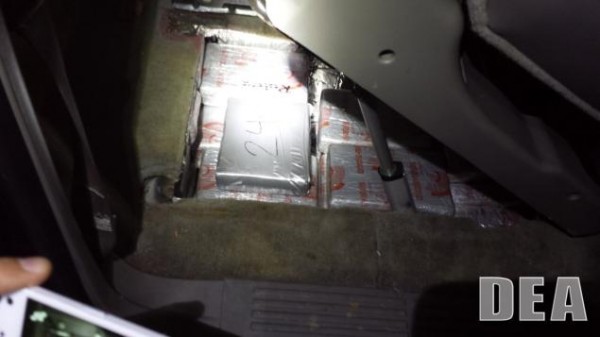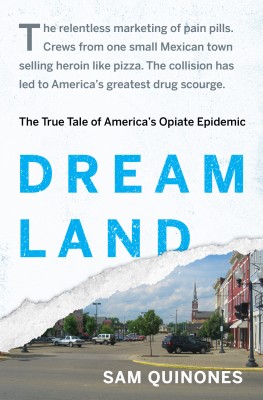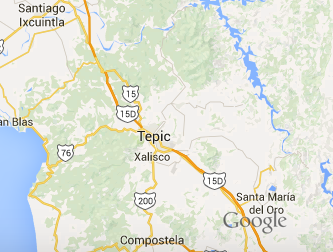I grew up admiring 60 Minutes for its storytelling and investigative reporting.
So many original stories. No one on television was doing what 60 Minutes was doing then. It looked so exciting and that was part of why I became a journalist.
So six months after the publication of my book Dreamland: The True Tale of America’s Opiate Epidemic, it saddened and appalled me to watch the show last night.
Last night, 60 Minutes ran a piece about heroin in Ohio. I’m very happy that these Ohioans, who I know and like and respect, are getting this megaphone. Their story needed telling.
But I have to stand my ground.
Months ago, my publisher and I pitched 60 Minutes on stories from Dreamland: first, the Xalisco Boys heroin traffickers, and then a story about heroin in Ohio.
Over the span of several months and several phone calls, 60 Minutes decided against both ideas.
The Xalisco story wasn’t doable, they concluded, after I convinced them that it was unrealistic to assume that they could show up and in 3-4 days have someone magically open up a heroin lab for them to film. I argued that there were other ways to tell the story. I found them sources, people with years of experience in the drug underworld who trusted me. That wasn’t good enough. They wanted traffickers who spoke English. I told a producer that the traffickers in the Xalisco system were working-class guys from Mexico without even sixth-grade educations and that they spoke only Spanish. He also insisted that 60 Minutes had to have film of dope being made, and had to have it accessible after three days of reporting on the ground.
The Ohio story that we then pitched 60 Minutes had no such cost/danger/language concerns. The state was awash in heroin now. America’s opiate ground zero – for many reasons I made clear in Dreamland. Pills had taken hold there first, and heroin had come sooner than it had anywhere else. Over lunch, a 60 Minutes producer even asked me what story I would do in Ohio. I gave her some ideas.
60 Minutes did go to Ohio. Made it look as if they had figured out who to talk to, and what questions to ask, all on their own. No mention of what led them there and what explained the whole story to them. When I asked them whether they were going to refer to my book, one producer said they wanted to focus on the personal stories of local folks. They could have done the personal stories of local folks in Alabama, or anywhere else in America, but then they wouldn’t have had a book telling them specifically where to look, whom to talk to, and what the story was.
Parents and others in Ohio and elsewhere are understandably thrilled that major media like 60 Minutes are finally taking an interest in this topic. I’m glad for them and very happy that the issue is now getting attention. Wayne, Brenda, Tracy, Jenna, Rob and others spoke with eloquence and force, and in my opinion saved the piece.
I hope they won’t see this as raining on their long-overdue parade … but I have to say something to defend myself, my family’s sacrifice, and my work. If I don’t, who will?
I spent years working on this story, interviewing hundreds of people, poring over documents, taking collect phone calls from Mexican traffickers in prisons. Before doing it, I lived and wrote for 10 years in Mexico, which made me distinctly prepared to see a part of this story that 60 Minutes producers, judging from our phone calls, knew only because of me.
I took a leave of absence from the LA Times, where my book’s story began (as I note several times). I finally resigned from the paper to finish this book. I went all over the country. Each trip meant time away from my wife and daughter; each trip meant scrimping on meals and motels. When few people were talking about heroin, when most folks I met looked at me askance for researching the topic, I risked my professional career and my family’s financial future: all to find a story that I believed to be profound in its nationwide impact, and in what it says about our country.
I’m thrilled to receive emails like this one, from a retired undercover narcotics officer, who helped in my heroin education:
“The 60 minutes Heroin story last night was the “CliffNotes” version of your book, they needed to have you on that piece! … These news stories are great but they are quickly becoming “old news”. They need to go a few layers deeper. It’s time to talk about solutions! Thanks to guys like you the nation now knows very clearly what the problem is, now it’s time to move the national narrative towards developing real solutions through accountability. … Keep up the good fight Brother …Be Safe!”
It isn’t often that a book more or less scoops radio, TV, and print. But I believe that, to a large degree, is what Dreamland did.
Since its release, I’ve been disappointed to see Time, Sports Illustrated, Washington Post and now the New York Times publish stories on topics that I dealt with first in Dreamland and not mention it. (Btw, my book clearly cites several books to which I am indebted, both in the text and in the acknowledgements.) But 60 Minutes seemed to me to cross a line.
And even after the months of dealing with them, I might not have written this blogpost had not Sunday’s show itself seemed to involve so little original reporting and seemed to rely so heavily on my book.
Is that what it means to be 60 Minutes these days? Just riff off the work of an independent reporter and do nothing to recognize it?
The whole episode reminds me that 60 Minutes is no longer a standard bearer of anything except cost containment. Shows like 60 Minutes no longer set the national debate. They’re followers, imitators,  now, where once they were leaders.
now, where once they were leaders.
Yet I’m also invigorated, exhilarated even, by this experience. For it means that I and many independent colleagues have wide-open spaces now where we can harvest stories. That if we’re willing to put in the work and take the risks, that important stories will be ours to find. It means it’s a great time to be an independent journalist.
The Daily Show made fun of TV cable journalists, and gave respect to real reporters. It taught a generation to be skeptical of what was reported to them on television. The next step is to elevate real independent journalism.
As desiccated titans collapse, abdicating any role in maintaining standards of journalism, we now have this terrain to ourselves. We must work it, push at it, be relentless. But it’s there. People want it, thirst for it, as I’ve found in the reaction to Dreamland. When we find these stories – as now only we are equipped to do – they will probably mean more than ever.
Remember, too, that if you want risk-taking, on-the-edge, original, independent, red-blooded American journalism, then you have to look pretty far past 60 Minutes. The Atlantic is doing some good stuff. As is the Atavist. Might check out the Marshall Project. I thought Grantland looked good before ESPN pulled its plug. I’m sure there are many places I don’t know of – and I invite them to chime in.
I’d also strongly suggest that the books recently written by my friends and former colleagues Gerry Hadden, Alfredo Corchado, and Jill Leovy are well worth your time.
And if you want to read the full story of America’s opiate epidemic from a journalist with no one but his wife and daughter standing behind him, then I’d suggest my own book, Dreamland.




 This comes from interviews with many recovering addicts whose lives were saved by being arrested, by going to jail and facing prison time.
This comes from interviews with many recovering addicts whose lives were saved by being arrested, by going to jail and facing prison time. dio. Reality show bimbos. It’s the babble of unimportant breaking news that takes up so much space on newspaper websites. The constant yammer on Facebook about stuff that is really personal and ought to be kept that way. We never get a minute to ourselves, it seems.
dio. Reality show bimbos. It’s the babble of unimportant breaking news that takes up so much space on newspaper websites. The constant yammer on Facebook about stuff that is really personal and ought to be kept that way. We never get a minute to ourselves, it seems.







